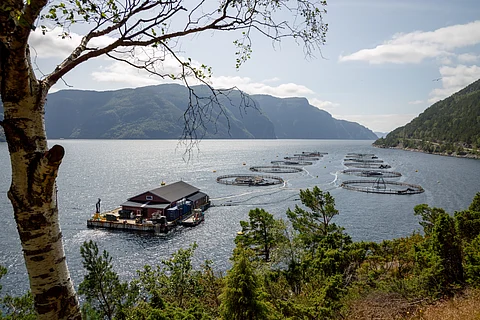

Soaring demand for expensive farmed salmon can leave coastal communities around the world struggling to access affordable local fishes, such as sardines and anchovies, warns a new study published in the journal Science Advances on October 16, 2024.
The study was led by Patricia Majluf, associate professor at the Cayetano Heredia University.
According to the study, the small fishes are frequently caught, processed and reduced to fishmeal and fish oil (FMFO) — almost all of which is used to feed farmed fish.
A total of 12 of the world’s top 20 fisheries (in terms of the volume of their catch) are so-called reduction fisheries in which a large proportion of the global catch is ground to produce FMFO.
With an average annual catch of 23.4 million tonnes, reduction fisheries exploit some of the most important stocks of forage fish (small pelagic fish), comprising around 26 per cent of global capture fisheries by volume. The largest reduction fishery, by far, is that for Peruvian anchoveta.
The catch from some fisheries, such as the anchoveta in Peru or Gulf menhaden in the US are almost exclusively used for reduction purposes.
Reduction fisheries often operate in regions with poor coastal communities that rely on access to these fish for sustenance and livelihoods, which has raised concerns about the global impact of FMFO production and the outlook for the aquaculture industry.
In this study, the researchers explore the industry’s use of the “Fish-in-Fish-out” (FIFO) ratio – the standard measure used to quantify how much wild fish is used to produce farmed fish.
The FIFO ratio is often used as an indicator of the impact of aquaculture on wild fish stocks.
The study showcased several misleading practices about the FIFO ratio, such as averaging fishmeal and fish oil inputs of carnivores and herbivores together to conceal the high feed requirements of carnivorous species.
This lowers the FIFO ratio, reaffirming the aquaculture industry's claim that its dependence on fish oil and fishmeal is decreasing.
But fish oil, in particular, is a limited commodity that is increasingly in demand for salmon farms, which now supply 70 per cent of all salmon consumed worldwide.
According to the report, farmed Atlantic salmon alone accounted for 60 per cent of fish oil usage in 2020.
The study points out, as an example, processing plants in West Africa that are exploiting vast amounts of small, highly nutritious fish, mostly sardinella, to produce fishmeal and fish oil for export.
The study noted a turbulent future ahead for fishmeal and fish oil production, as climate change is impacting fish populations around the world, including the main source of fishmeal and fish oil — the Peruvian anchoveta.
Like many others, that species in warmer waters contains less fish oil.
The study also warned that continued poor management of fisheries allows for ever higher catches of juveniles.
Fishing too many juveniles is not just detrimental to the sustainability of any stock but also leads to lower oil yields in reduction fisheries.
Combined, these factors are driving feed manufacturers to look elsewhere for additional oil, including in fisheries which typically provide fish for direct human consumption, like mackerel, the report stated.
For these reasons, the researchers urge the industry to operationalise substitutes for fishmeal and especially fish oil in aquaculture fish feeds.